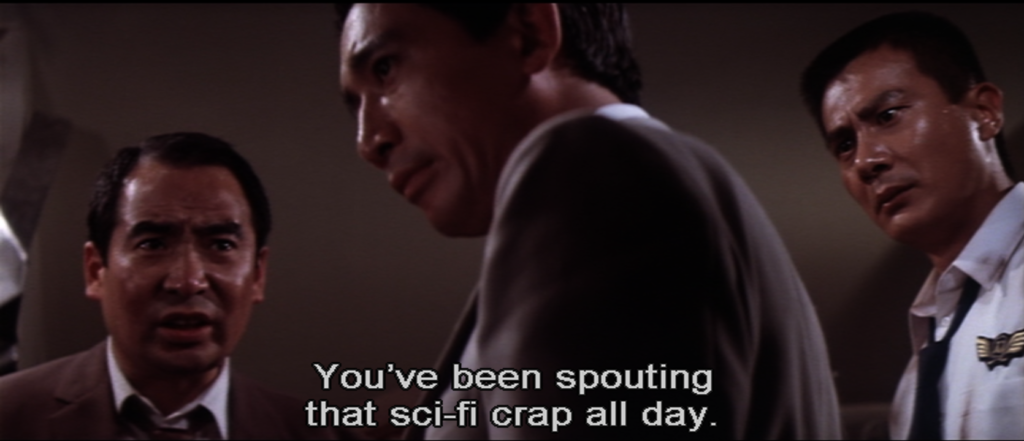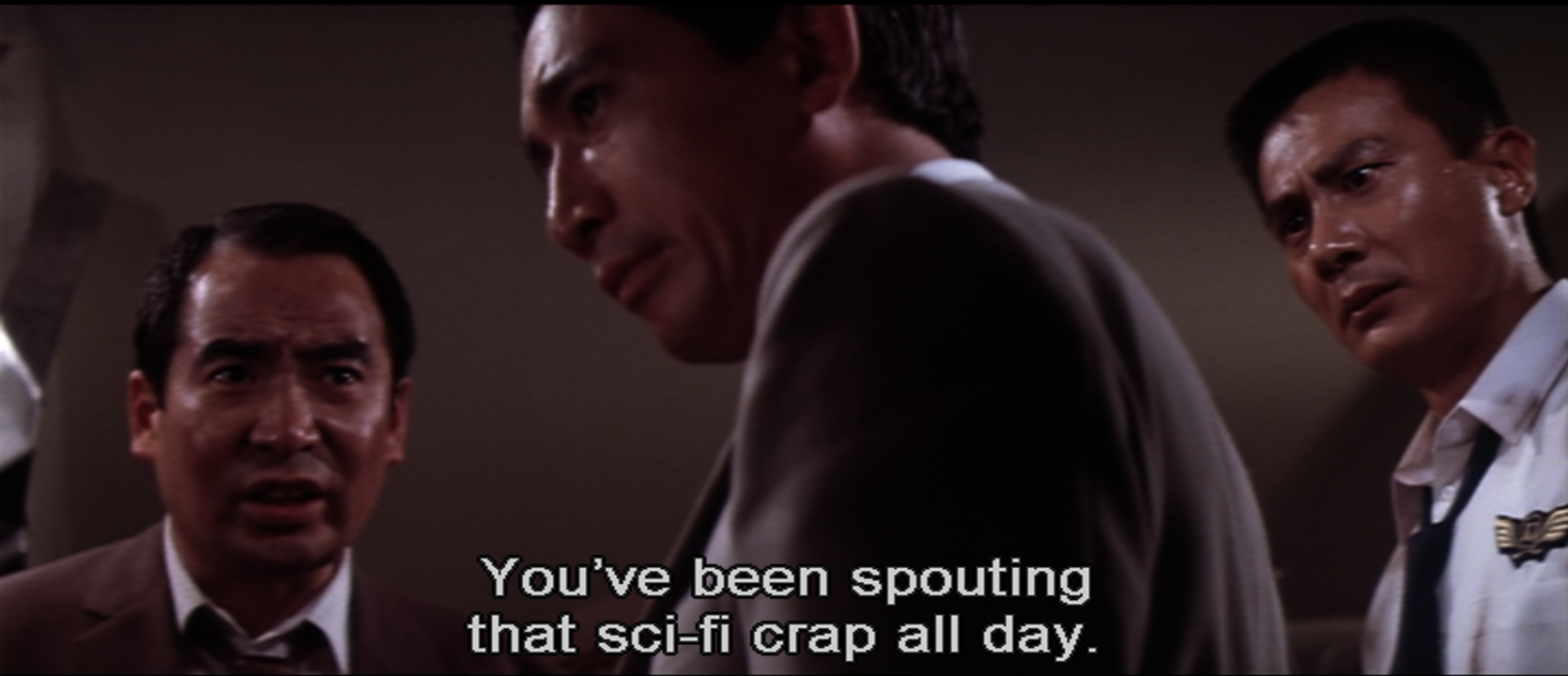Movie Review: Goke, Body Snatcher from Hell (1968) directed by Hajime Sato
The Japan Air Lines flight from Tokyo to Osaka was already ill-omened before the bomb threat was received, what with the blood-red sky and birds splattering themselves against the windows. Once the crew are alerted to the possibility of a bomb, they perform a bag check on the passengers. No bomb is found, but one passenger oddly does not have a bag. When a bag is found in the kitchenette with not a bomb, but a rifle inside, that passenger is the obvious suspect. He turns out to also have brought a pistol on board, and hijacks the plane. He wrecks the radio and orders the pilot to head to Okinawa. A few minutes later, a bright light with a saucer shape buzzes the plane, the navigation instruments burn out, and the plane crashes.

A few hours later, consciousness returns to the few survivors. They are: Co-pilot Sugisaka (Teruo Yoshida), thrust into a leadership role; Kazumi Asakura (Tomomi Sato), a stewardess who is trying her best under the difficult circumstances; Senator Gozo Mano (Eizo Kitamura), a prominent politician facing a tough re-election campaign; Mrs. Neal (Kathy Horan), an American widow whose husband died horribly in the Vietnam War; Dr. Momotake (Kazuo Kato), a psychiatrist who has a ghoulish fascination with how people act in extreme situations; Mr. Tokuyasu (Nobuo Kaneko), an arms dealer lobbying Senator Mano to pass a defense bill; Mrs. Noriko Tokuyasu (Yuko Kusunoki), his long-suffering wife; Professor Tokiyuki Saga (Masaya Takahashi), a space scientist; and Matsumiya (Toshihiko Yamamoto), the troubled teen who’d called in the bomb threat.
Oh, and a bit later, the hijacker Hirofumi Teraoka (Hideo Ko) turns out not to have been dead after all, just more unconscious than the others. Once he revives, he attempts to escape, revealing that the crash site is a rocky, avalanche-prone wilderness area. Since night is falling, the survivors head back to the plane. Teraoka again attempts escape with Miss Asakura as hostage, but they stumble across a orange-glowing saucer-shaped object. Teraoka is captured and possessed by one of the inhabitants of the saucer.
This turns out to be a silvery blob alien calling itself “Gokemidoro” (voice by Keiichi Noda) that turns its human hosts into bloodsucking corpses, basically vampires. The thing that used to be Teraoka then stalks the other survivors, who die one by one.
The Japanese title was Kyuketsuki Gokemidoro, “Vampire Gokemidoro”, and it was put out by Shochiku, a studio better known for artsy movies that did a handful of horror flicks in the late 1960s. The art film aesthetic is a noticeable influence on the look of the movie, particularly the bits inside the saucer and the red flashes of war and other human atrocities. (Mrs. Neal has ‘Nam flashbacks, and she wasn’t even there.) It saves on budget with a limited cast and few sets, but doesn’t look cheap.
The story is pessimistic about human nature. Most of the characters are either horrible people to begin with, or reveal their inner beast under pressure. It’s mentioned a couple of times that perhaps humanity deserves to be wiped out by the Gokemidoro invaders, which leads into the notorious downer ending.
Some aspects of the story are never explained, such as Teraoka’s original motivation or plans, or what Matsumiya thought he was up to with the bomb thing. The onscreen Gokemidoro’s actions also don’t make a lot of sense given what happens offscreen, but perhaps they were an exceptionally sadistic member of their species.
A couple of neat bits: Mrs. Neal only speaks English, so the stewardess or co-pilot have to translate for her sometimes. Teraoka was meant to be the heavy all the way through, but the actor had to leave before filming was complete, so the script had a quick rewrite to allow Gokemidoro to switch hosts. This is all to the good, as it emphasizes how screwed the survivors are.
Some of the special effects are outdated, like the obviously fake rocks in the avalanche sequences. But the blob alien oozing in and out of wounds is still effective and creepy.
Content note: It’s horror, so human death comes as no surprise, but several birds splatter messily against windows. Body horror. Dubious consent sexual touching (fully clothed). Mention of domestic abuse. Alcohol abuse. Late teens and up who are good with horror should be okay.
Goke is not a masterpiece, but it’s an interesting movie that delivers on the shocks. Recommended to J-horror fans.

